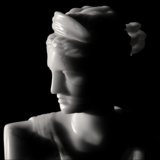Subsurface Scattering
All non-metallic materials are translucent to some degree.
This means that light scatters inside the material before being
either absorbed or leaving the material at a different location.
This phenomenon is called subsurface scattering.
I
started looking at techniques for simulating volumetric subsurface scattering
at MIT in 1998. Previous methods had only considered 1d transport
wrapped into a BRDF model and therefore ignored the transport of
light through the material. At MIT, we developed techniques based on photon
mapping and path tracing to simulate the darkening of many
wet materials as well as the translucency of
weathered stone. Photon mapping is quite
good at simulating subsurface scattering, but
it becomes costly for highly scattering materials such as
milk and
skin. In the fall of 2000, we were
investigating alternatives to the Monte Carlo methods, which resulted
in the development of a new technique based on a diffusion approximation.
The diffusion approximation is much faster than tracing individual photons,
and it is simple enough that a
BSSRDF
can be formulated. The BSSRDF is particularly suited for highly
scattering translucent materials where the assumptions in the ubiquitous
BRDF approximation break
down. As an example, the BSSRDF was used to render the translucent
marble bust that is shown here. Note how the BSSRDF captures the
the soft and smooth appearance as well as the light diffusing through
the marble - something that a BRDF cannot simulate. The BSSRDF research
has been adapted rapidly by the movie industry and it won
an academy award in 2004.
Lately, we have worked on techniques
for rapid evaluation of the BSSRDF model,
and extensions to simulate diffusion in
multilayered translucent materials
such as human skin. Recently, we developed
a generalized Lorenz-Mie theory for
computing the optical properties of translucent materials and
scattering media.
|
A translucent marble bust illuminated from behind
|
|
A multi-layered skin model
|
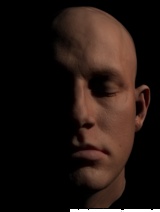
|
This face model was rendered using a layered skin model described in
this paper. The skin is composed of
three layers: epidermis, dermis, and the bloody dermis. The scattering
parameters for the individual layers are from measured data available
in the medical physics literature. Note that the multilayered model
gives the skin a less waxy look compared to the standard BSSRDF
(dipole diffusion) based skin rendering shown below.
|
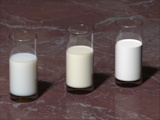
|
This image shows how milk can be rendered realistically using the
BSSRDF model. From left to right we see skim milk, whole milk, and
diffuse milk. The diffuse milk has been rendered using a traditional
BRDF model, which results in a hard appearance making the milk look
more like white paint rather than milk. The difference is even more
noticable once the light moves - this can be seen in the animation
"Rendering Translucent Materials" on the
animations webpage.
|

|
This translucent teapot was rendered in 7 seconds on a 800MHz dual-P3
PC using a new fast hierarchical rendering technique for translucent
materials. This method was developed with Juan Buhler from PDI and
it is described in this paper.
|
|
A face model rendered using a BRDF and a BSSRDF
|
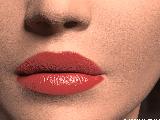
|
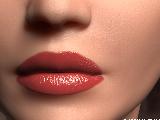
|
|
BRDF rendering
|
BSSRDF rendering
|
This face model has been rendered using the BRDF and BSSRDF described
in this paper. The BRDF model
is a simplified version of the BSSRDF that does not account for
subsurface light transport (it assumes that the light scatters at
a single point on the surface). Note that the BRDF model does include
subsurface scattering - the subsurface scattering component
is split into a single
scattering term and a diffuse term. In contrast to the BRDF the
BSSRDF simulates subsurface light transport (e.g. the light enters
and leaves at different locations on the surface)
and gives the skin a more natural translucent appearance.
Note the translucency around the nose and the color bleeding in the shadows.
These effects are achieved even though the setup is very simple -
one light source, only one binary map is used to distinguish the
lip from the skin region, and a bumpmap is used to add more detail
to the skin. The face was modeled by Steven Stahlberg.
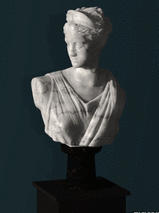
|
This is the same marble bust as shown above. The difference is
that the entire bust is shown and that the light source is in
front of the bust. This reduces the translucency effect
significantly. This was one of the first images with subsurface
scattering that I rendered.
|

|
Even though granite seems like a solid material it still
scatters light below the surface. This is due to micro
cracks and small air bubbles in the material. For granite
the translucency is most noticeable in the quartz grains.
|
|
A granite and a marble bunny
|

|
A granite and a marble version of the Stanford bunny.
|
henrik


